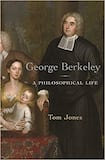
In the mid-1960s, when the fellows of Trinity College Dublin decided to name their new library after Bishop George Berkeley, they gave little thought to the fact that Berkeley had been a slave owner. Or that, during the years he spent on Rhode Island, Berkeley accepted the brutality of the transatlantic slave system without comment. In this respect, Trinity was no different from other universities in the western world.
Berkeley was a celebrated thinker. He was the only Irish philosopher to rival John Locke, the great champion of English liberty who was also implicated in African-American slavery. If he left rather little in the way of political thought, he demolished many of the contemporary philosophical beliefs about how human beings acquire knowledge of the world. Above all, he developed the famously eccentric doctrine of “immaterialism”.
In a memorable episode of Father Ted – the caravan-park romp titled Hell – Ted holds up two toy cows and explains patiently to Dougal: “One last time. These are small, but the ones out there are far away.” Philosophers in the early 18th century were preoccupied with explaining how humans deduced information about size, shape, depth and distance from visual cues.
The starting point was Isaac Newton’s work on the refraction of light. In an era free of academic specialisation, they moved easily between physics, mathematics, astronomy and what we would now call psychology. Most philosophers were also ordained clergymen, a job that left the well-connected with plenty of spare time. Most were simultaneously anxious about the momentous implications of new scientific discoveries for matters of moral judgment and religious belief.
Berkeley first encountered these controversies in the pioneering Dublin Philosophical Society, which included several TCD fellows. The significance of his influential New Theory of Vision (1709) was to shift attention away from the properties of the objects themselves towards the psychological experience of the individual. It was rapidly followed by the theory of immaterialism set out in his Principles of Human Knowledge (1710).
Although we believe the world has a material reality that we can feel and touch, Berkeley sought to demonstrate that it exists only in the form of perceptions and ideas. Underpinning this counterintuitive doctrine was a counterintuitive motive.
Berkeley thought that the decline of Christian orthodoxy among the avant-garde writers of his day stemmed from their uncertainty that our senses give us reliable information about reality. His solution was to demonstrate that material reality was in any case an illusion.
In his probing, learned and multifaceted biography, Tom Jones emphasises Berkeley’s view that our senses would nevertheless reveal the existence of regular laws that were the product of an organising, divine intelligence. They provided proof, as the bishop put it, of “the Deity inspecting, concurring, and interesting itself in human actions and affairs”.
Berkeley thought unusually deeply and systematically about the great controversies of his time. The results were often unsettling. His attempt to bring philosophical rigour to political theory was so different from the usual language of Whigs and Tories that many regarded him as disloyal to the Williamite settlement and the Protestant constitution. He wrote about banking and finance, agriculture, health, the education of women, the Catholic peasantry, and temperance.
Jones combines lucid accounts of Berkeley’s writings with the biographer’s relish for the contradictions, quirks and untidiness of a human life. We learn about Berkeley’s musical tastes, his enthusiasm for early-rising (4am), his reaction to witnessing a public execution (an experiment in hanging himself to study the impact on his mind), and his fascination with tarantulas during his lengthy tour of southern Italy, and with the hypnotic dancing of their victims.
Recently one historian demanded that Berkeley’s statue be removed from Trinity as a prelude to the thorough decolonising of the Irish university system. The problem with this call to arms is partly that there is no statue of Berkeley in Trinity, and there never has been. But it is also surprisingly difficult to assess Berkeley’s attitude to African slavery against the attitudes of his contemporaries. We don’t know what he thought about abolition, because abolition was never a remotely serious political prospect during his lifetime.
The debate that preoccupied Berkeley was whether or not enslaved Africans could be baptised. Berkeley was on the side of conversion, and his views were typical of Anglican missionaries. The slave holders were mostly hostile. They feared, wrongly as it turned out, that Christianising the Africans would make it harder to treat them as sub-human.
On this issue, Jones’s exemplary biography demonstrates how to reconstruct the history of 18th-century Europe without perpetuating the complacent eurocentrism of its inhabitants. Berkeley’s attitudes to ethnic and racial difference are fully explored. Jones also creates space for the women who knew the bishop, read him, and sometimes debated with him.
Simultaneously, he writes with great historical sensitivity and fidelity about Berkeley's world as he saw it – about the particular religious order that emerged after the Revolution of 1688, and the revolutionary arguments Berkeley
produced to defend it.
Ian McBride is Foster Professor of Irish History at Hertford College, Oxford












